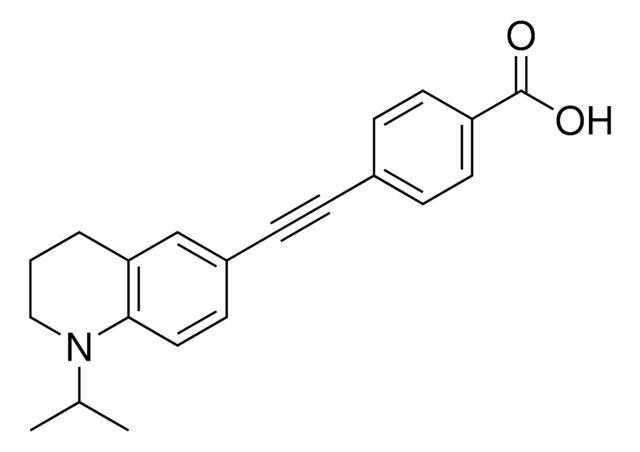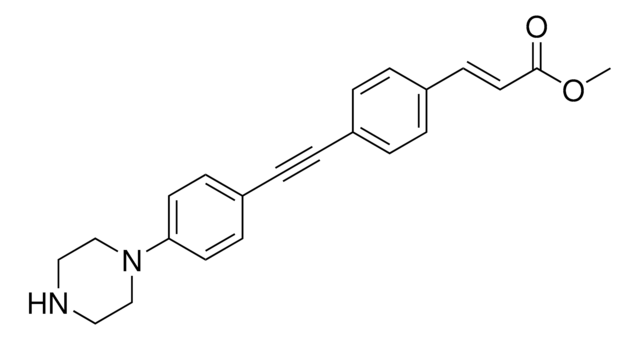추천 제품
분석
≥95% (HPLC)
양식
powder
저장 온도
2-8°C
SMILES string
N1(c2c(cc(cc2)C#Cc3ccc(cc3)C(=O)O)C(C=C1)(C)C)C(C)C
InChI key
HXWVRWZLWIKKOS-UHFFFAOYSA-N
애플리케이션
Fluorescence microscopy, fluorescent retinoid binding assay, fluorescence spectroscopy.
생화학적/생리학적 작용
Strong ligand for retinoic acid receptor proteins
특징 및 장점
LightOx19 is a synthetic analogue of all-trans-retinoic acid (ATRA), that exhibits solvatochromatic fluorescence emission when excited with UV or 405 nm light. The compound is a strong ligand for the retinoic acid receptor proteins (RARs) and related cellular retinoic acid binding proteins (CRABPI/II) and can, therefore, be used as a replacement for ATRA in cellular assays involving retinoid signaling processes. LightOx19 can be utilised to study retinoid behaviour using fluorescence microscopy, employed in a competitive fluorometric ligand-binding assay for direct determination of the strength of binding of non-fluorescent retinoids to a protein target, and as a fluorophore in fluorescence spectroscopy.
Product can be used with our line of photoreactors: Including Penn PhD (Z744035) & SynLED 2.0 (Z744080)
Product can be used with our line of photoreactors: Including Penn PhD (Z744035) & SynLED 2.0 (Z744080)
기타 정보
Chemical Equivalency 1ea=1mg
법적 정보
LightOx is a trademark of LightOx Ltd.
Storage Class Code
11 - Combustible Solids
WGK
WGK 3
Flash Point (°F)
Not applicable
Flash Point (°C)
Not applicable
가장 최신 버전 중 하나를 선택하세요:
문서
Fluorescent retinoic acid analogues for use in cellular imaging, protein-ligand binding assays, and flow cytometry to bypass traditional problems associated with fluorescent probes.









